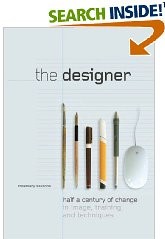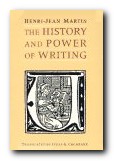free pages from our English Language software program
Spelling – definition
![]() Spelling is a convention by which words are represented in writing by letters of the alphabet.
Spelling is a convention by which words are represented in writing by letters of the alphabet.
![]() The spelling of most words is now largely fixed.
The spelling of most words is now largely fixed.
![]() The relationship between spelling and pronunciation is not consistent.
The relationship between spelling and pronunciation is not consistent.
Examples
The term connection can also be spelled connexion.
Judgement can also be spelled Judgment.
Even spelled can also be spelled spelt!
Use
![]() Competence in spelling is desirable, but we cannot possibly know the definitive spelling of all the English lexicon.
Competence in spelling is desirable, but we cannot possibly know the definitive spelling of all the English lexicon.
![]() Good spelling usually results from an awareness of those words which we need to check in a dictionary.
Good spelling usually results from an awareness of those words which we need to check in a dictionary.
![]() Computer spell-checkers are an enhancement to the writing process. They should be used with caution however, as some errors are those of wrong word rather than of spelling.
Computer spell-checkers are an enhancement to the writing process. They should be used with caution however, as some errors are those of wrong word rather than of spelling.
![]() For instance, ‘They took there places’. The spell-checker would let that pass.
For instance, ‘They took there places’. The spell-checker would let that pass.
![]() NB! Shakespeare used a variety of spellings for his own name.
NB! Shakespeare used a variety of spellings for his own name.
![]() Spelling was not generally fixed in English until the eighteenth century. [Samuel Johnson’s dictionary was a landmark in this respect.]
Spelling was not generally fixed in English until the eighteenth century. [Samuel Johnson’s dictionary was a landmark in this respect.]
![]() The following example is from a poem written in the seventeenth century, showing the original spelling of what we would now write as dearly, fain, and enemy:
The following example is from a poem written in the seventeenth century, showing the original spelling of what we would now write as dearly, fain, and enemy:
Yet dearley I love you, and would be loved faine,
But am betroth’d unto your enemie[JOHN DONNE]
![]() Spelling mistakes in formal writing create a very bad impression.
Spelling mistakes in formal writing create a very bad impression.
![]() Some words may have more than one acceptable spelling:
Some words may have more than one acceptable spelling:
connection can be spelled connexion
judgement can be spelled judgment
![]() Certain organisations such as newspapers and publishers issue rules on spelling for their authors. This is known as House Style.
Certain organisations such as newspapers and publishers issue rules on spelling for their authors. This is known as House Style.
![]() Spelling in English does have rules — but there are many exceptions and irregularities. The plural of baby is babies but the plural of donkey is donkeys. We write about honour but the adjective is spelled honorary.
Spelling in English does have rules — but there are many exceptions and irregularities. The plural of baby is babies but the plural of donkey is donkeys. We write about honour but the adjective is spelled honorary.
![]() Even the verb ‘to spell’ itself may be spelled or spelt in the past tense.
Even the verb ‘to spell’ itself may be spelled or spelt in the past tense.
![]() The reason for this irregularity is that English vocabulary is made up of many other languages [Old English, Latin, Greek, and French]. Words from these languages have brought their own spelling characteristics.
The reason for this irregularity is that English vocabulary is made up of many other languages [Old English, Latin, Greek, and French]. Words from these languages have brought their own spelling characteristics.
![]() There are minor differences in the spelling of English and American English. Colour is color in the USA, and centre is spelled [or spelt!] center.
There are minor differences in the spelling of English and American English. Colour is color in the USA, and centre is spelled [or spelt!] center.
![]() There is no easy way to learn correct spelling. Rules exist, but there are many, many exceptions. You should simply take an interest in the words themselves.
There is no easy way to learn correct spelling. Rules exist, but there are many, many exceptions. You should simply take an interest in the words themselves.
![]() On the question of possible spelling reform, the American writer Mark Twain has some typically humorous comments to make.
On the question of possible spelling reform, the American writer Mark Twain has some typically humorous comments to make.
A Plan for the Improvement of English Spelling
For example, in Year 1 that useless letter ‘c’ would be dropped to be replased either by ‘k’ or ‘s’, and likewise ‘x’ would no longer be part of the alphabet. The only kase in which ‘c’ would be retained would be the ‘ch’ formation, which will be dealt with later.
Year 2 might reform ‘w’ spelling, so that ‘which’ and ‘one’ would take the same konsonant, wile Year 3 might well abolish ‘y’ replasing it with ‘i’ and Iear 4 might fiks the ‘g/j’ anomali wonse and for all.
Jenerally, then, the improvement would kontinue iear bai iear with Iear 5 doing awai with useless double konsonants, and Iears 6-12 or so modifaiing vowlz and the rimeining voist and unvoist konsonants.
Bai Iear 15 or sou, it wud fainali bi posibl tu meik ius ov thi ridandant letez ‘c’, ‘y’ and ‘x’ — bai now jast a memori in the maindz ov ould doderez — tu riplais ‘ch’, ‘sh’, and ‘th’ rispektivli.
Fainali, xen, aafte sam 20 iers ov orxogrefkl riform, wi wud hev a lojikl, kohirnt speling in ius xrewawt xe Ingliy-spiking werld.
Self-assessment quiz follows >>>
© Roy Johnson 2004
English Language 3.0 program
Books on language
More on grammar


 David Acres, Passing Exams Without Anxiety, Oxford: How to Books, 5th edn, 2000, ISBN: 1857032691. Study skills tips for examinations up to undergraduate level. Includes advice on writing under pressure.
David Acres, Passing Exams Without Anxiety, Oxford: How to Books, 5th edn, 2000, ISBN: 1857032691. Study skills tips for examinations up to undergraduate level. Includes advice on writing under pressure.